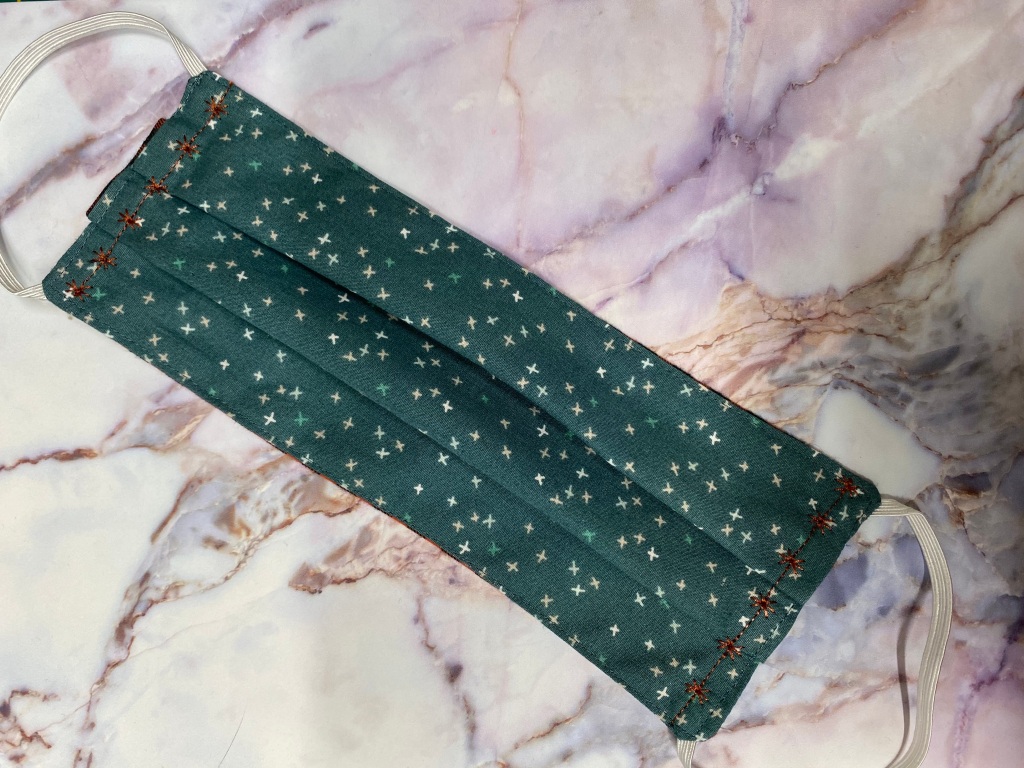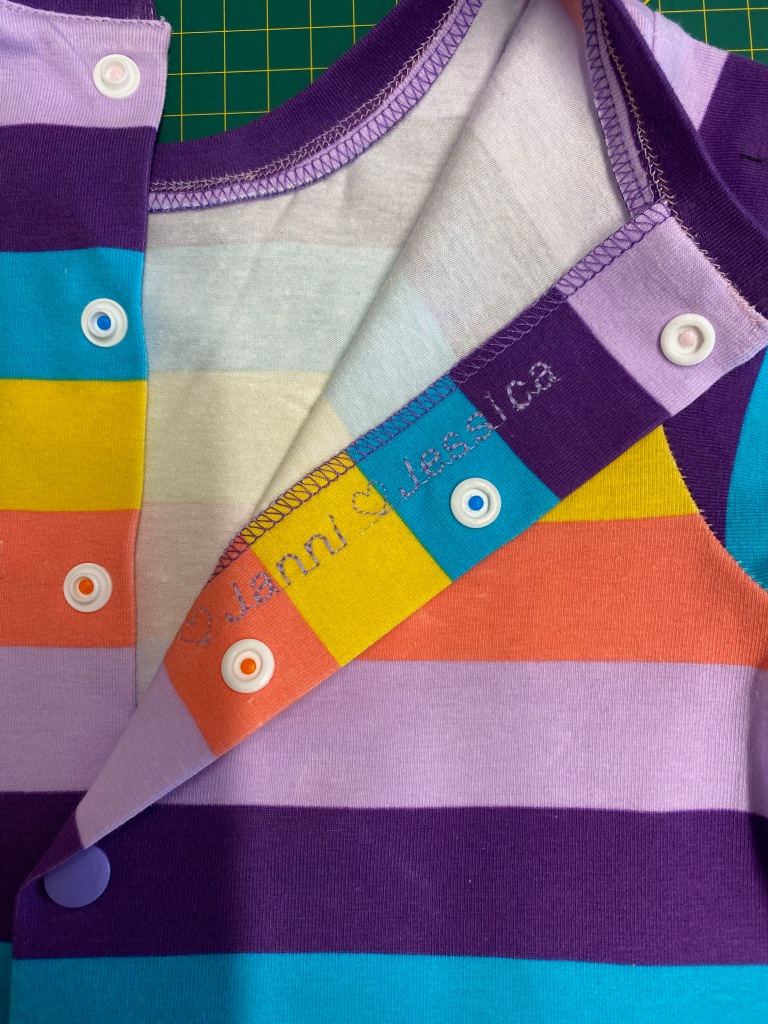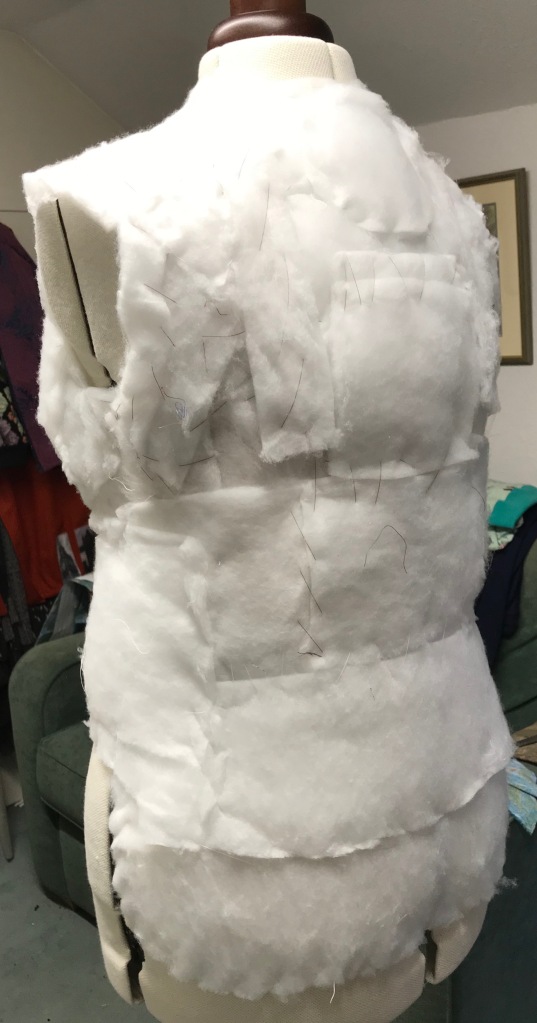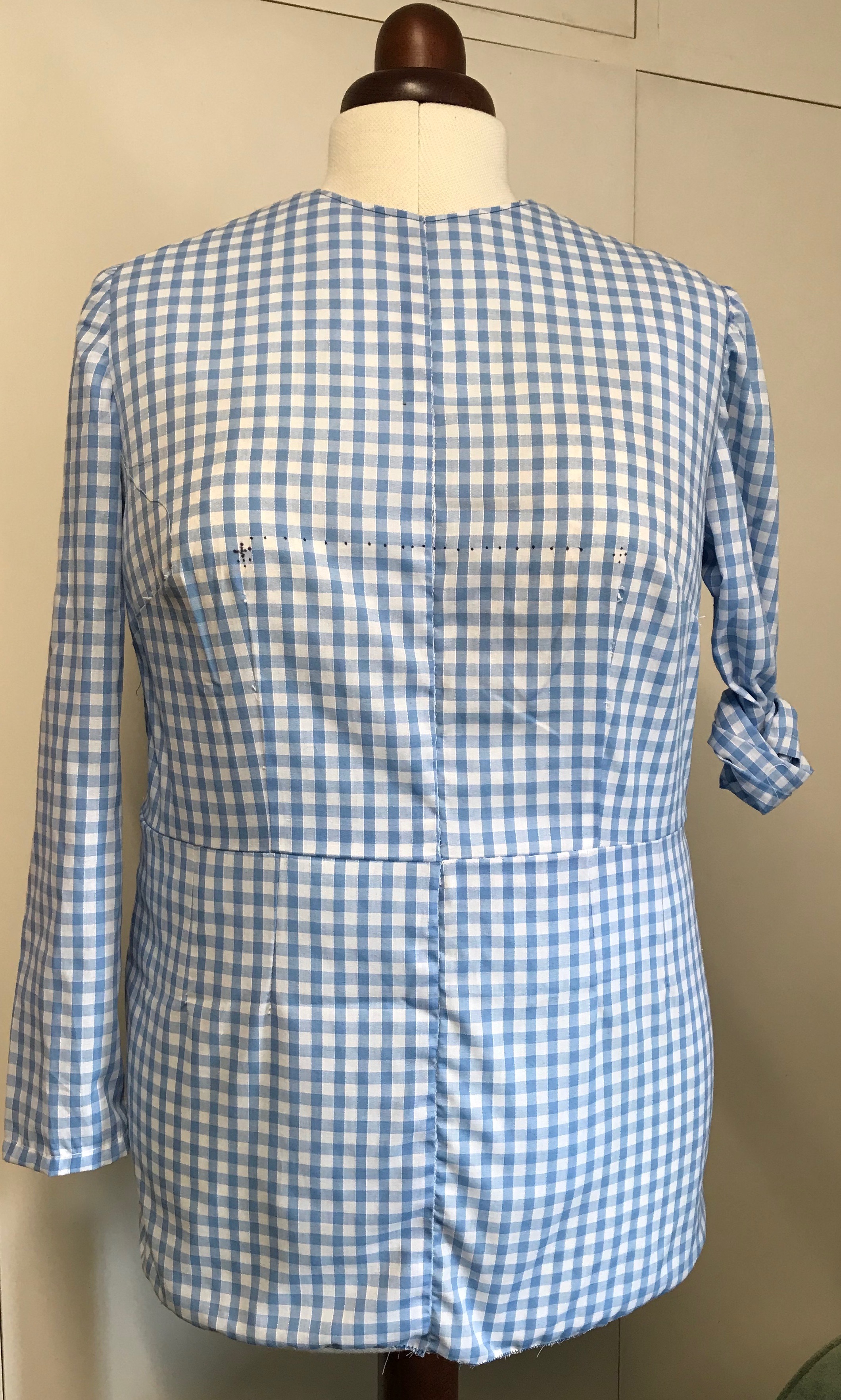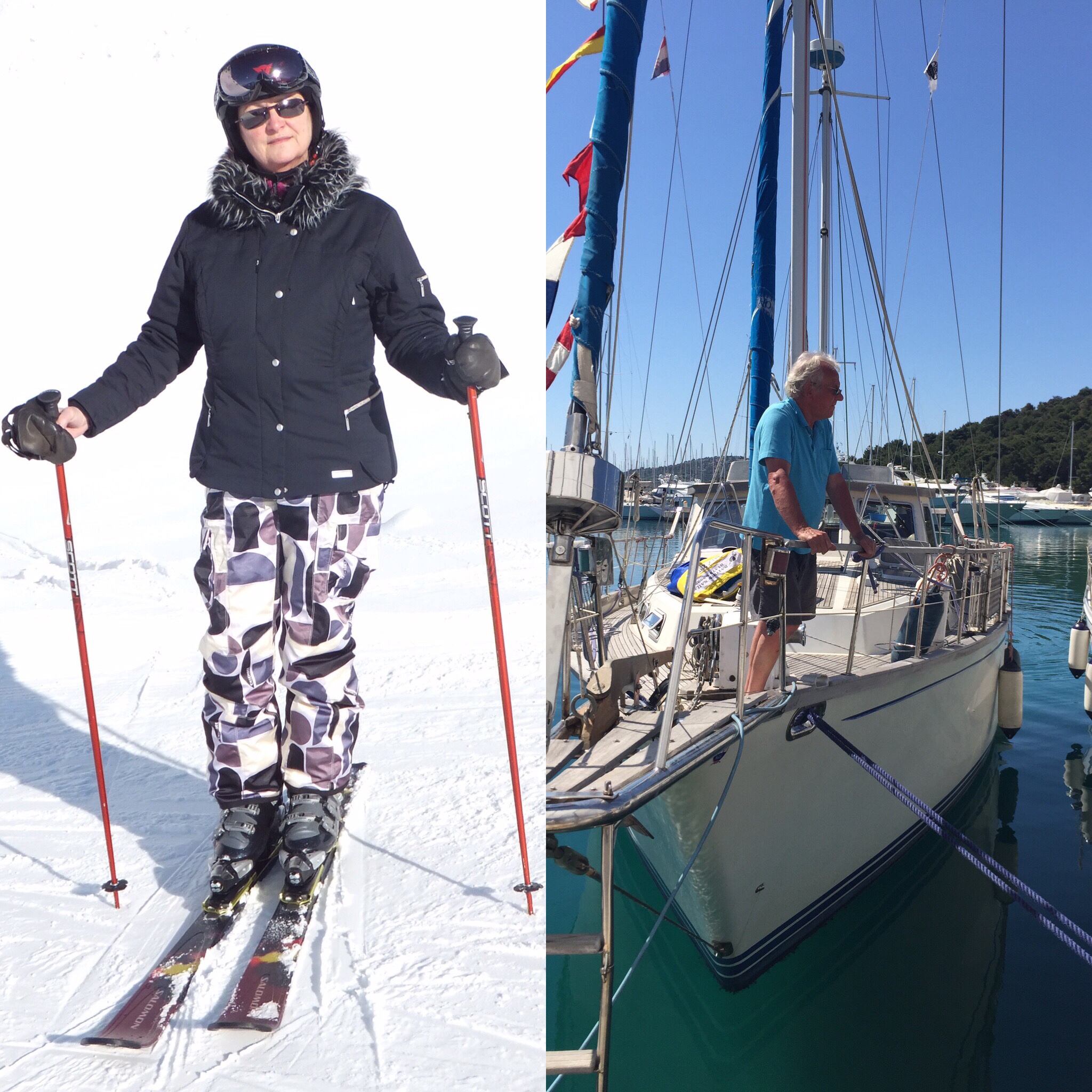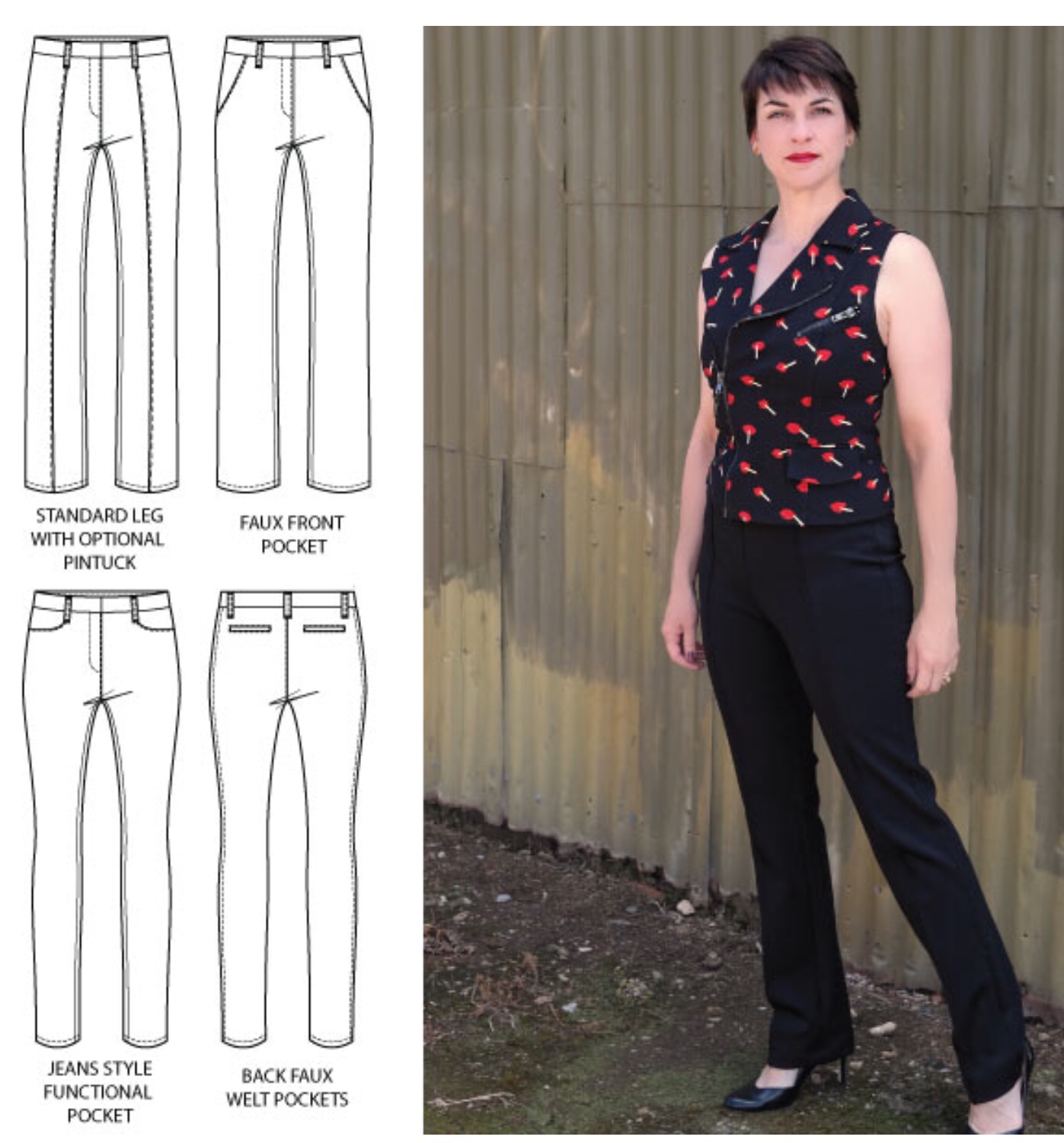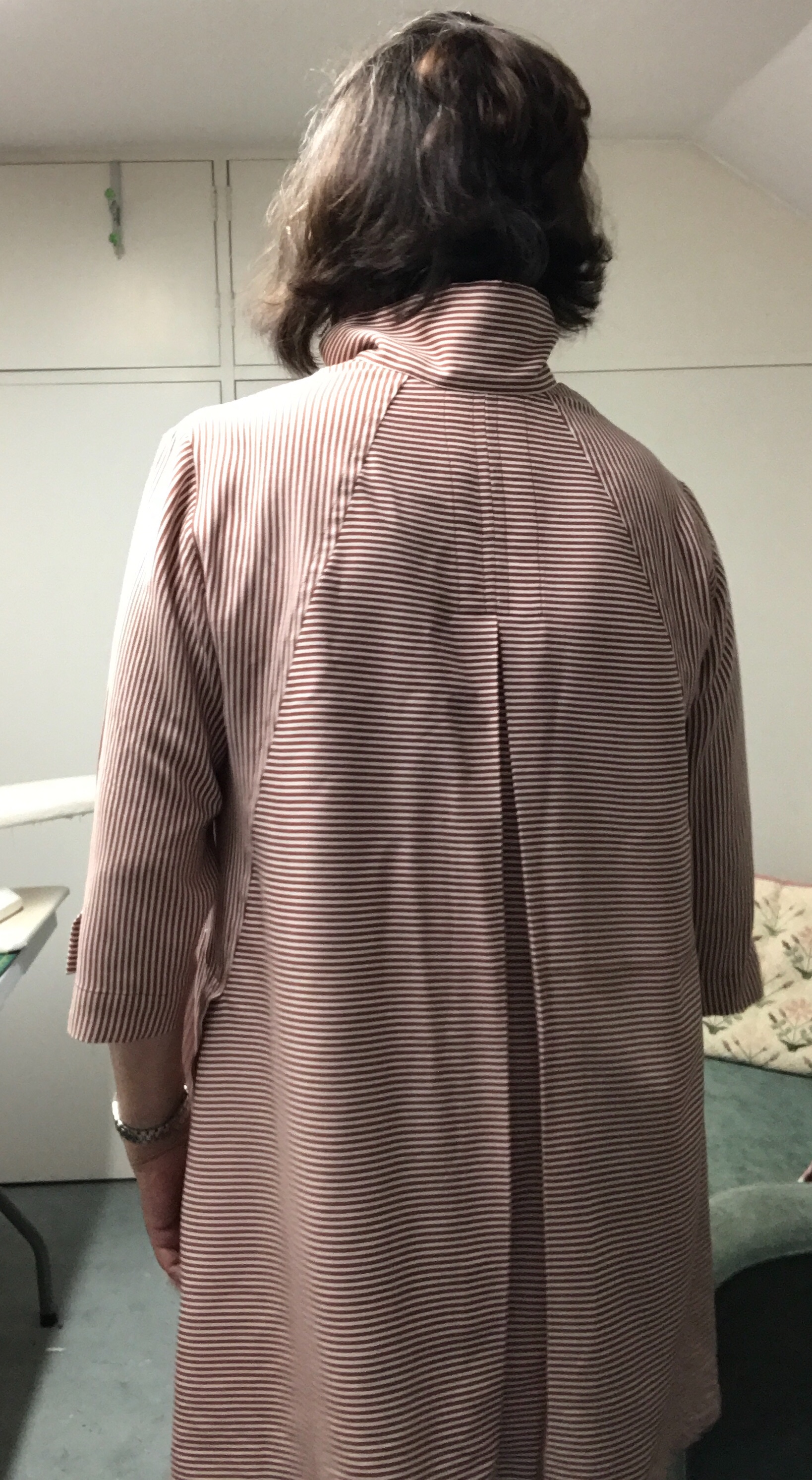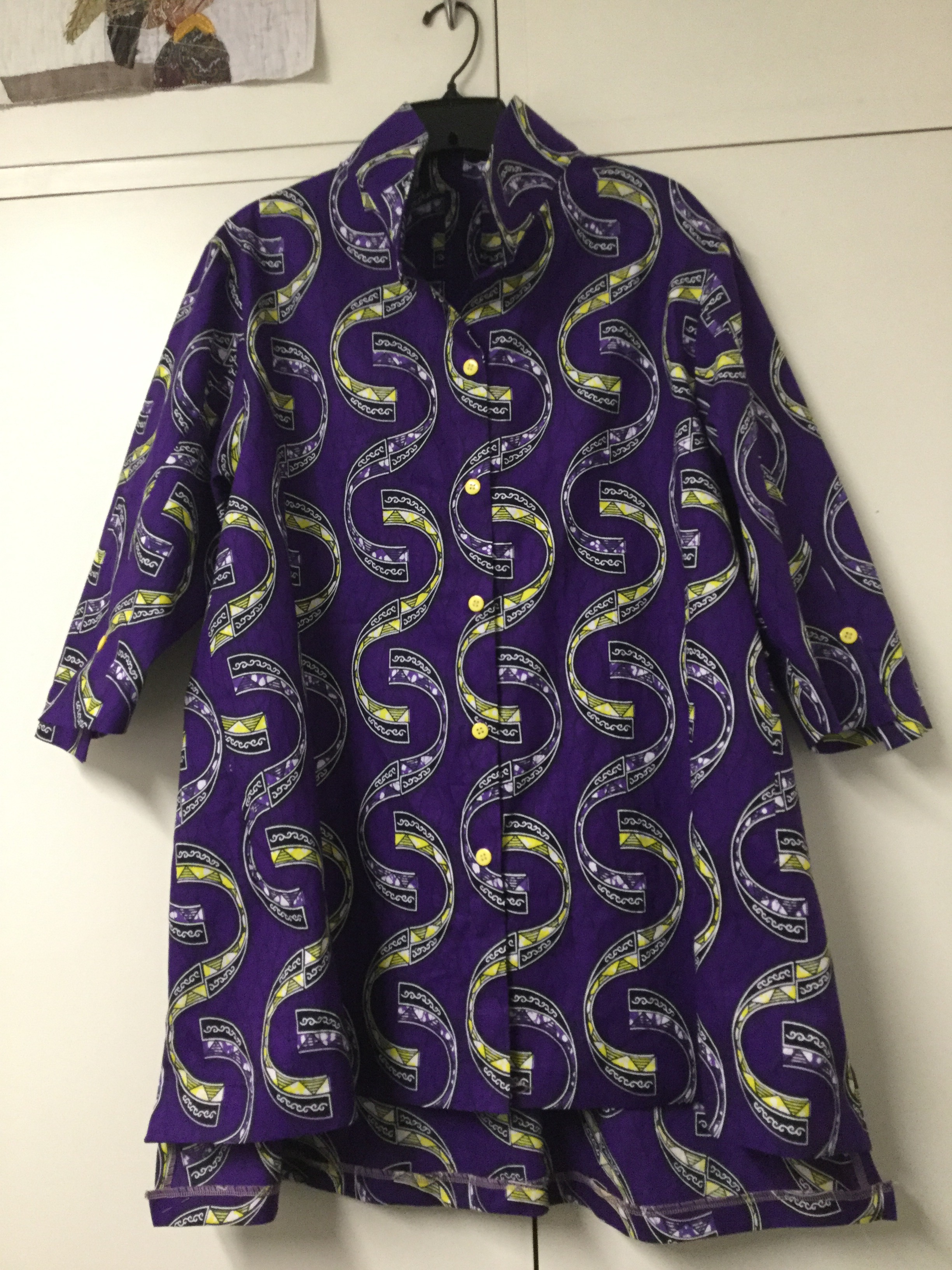a collaboration with SewEssential
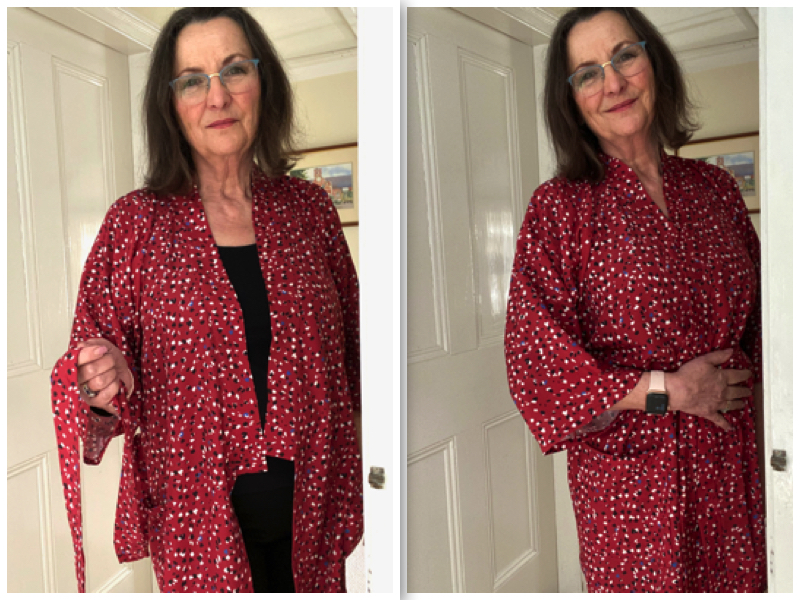
I made a crepe de chine robe for my daughter this Christmas, it’s a good giving option, the sizing and the sewing are both untaxing. I liked it so much I wanted one for myself, so when Lucy from SewEssential.co.uk suggested a collaboration using a John Kaldor Crepe de Chine there was no contest as to what I would make with it.
I used Jalie 3889 Melanie Robe, it is a Kimono inspired shaped jacket, which depending on the fabric choice can be a dressing robe, beach cover up, slinky jacket or cosy cardigan. My Polyester Crepe de Chine – which weighs in at a lightweight 85 gsm – puts my garment into the Dressing Robe category. The pattern is in 27 sizes from age 2 up to 50” bust.
The fabric is light but not too slippery. It has a tendency to move when cutting out. I used long fine sharp pins to secure the pattern pieces. My fabric has a small overall design so I wasn’t concerned about matching the pattern, but had I been I would have cut the pieces singly. Occasionally even my very sharp pins struggled to pierce the fabric, at first I thought they might be blunt (they were new!) But I found by moving them to a slightly different position they went through fine. I think the polyester fibre is tightly woven and quite resistant, but generally the pins slipped into it nicely, and didn’t leave any marks. Something to consider when using fine fabrics.
I fiddled around with sample stitches. Initially my seams puckered, but by loosening the tension, and going to a much shorter stitch length I was able to correct that.
In order to have a neat edge on the lower front facing I cut a 2 cm strip of very fine interfacing (Bosal Envy Silk Interfacing) and used a standard 3 thread overlocking stitch on my Juki 654 Serger. To stop the pockets fraying I simply zigzagged them on my Juki DX7 sewing machine, which resulted in a neat, partly rolled edge (see photo below) My current favourite thread is Madeira Aerofil Polyester, it comes on a 400m spool and it is finer, so it lasts longer.
I made the size to fit my bust measurements but its a loose fitting garment so the size wasn’t crucial and is easily adjusted.

/
Requirements
Jalie 3889 Melanie Robe
2.75 metres of fabric
Fine interfacing (optional)
Polyester sewing thread
Size and Alterations
I made size Z for a 42” bust measurement. The pattern pieces are all very square, the only alteration I made was to scoop out the back neckline by 2 cms. this altered the neck circumference so I also lengthened the neck bands by 1.5cm on each end.
Considerations
Mark all notches and dots. Sewing fine fabrics needs a bit of care. I used a new Microtex 70 needle, I tried a few others before settling on this. Test stitching showed some seam puckering, that you could smooth out with your fingers, suggesting that more thread was needed in the seams, so I loosened the thread tension and shortened the stitch length to 1.6mm, removing any puckering. I also used a hot iron with steam to press all the seams and hems.
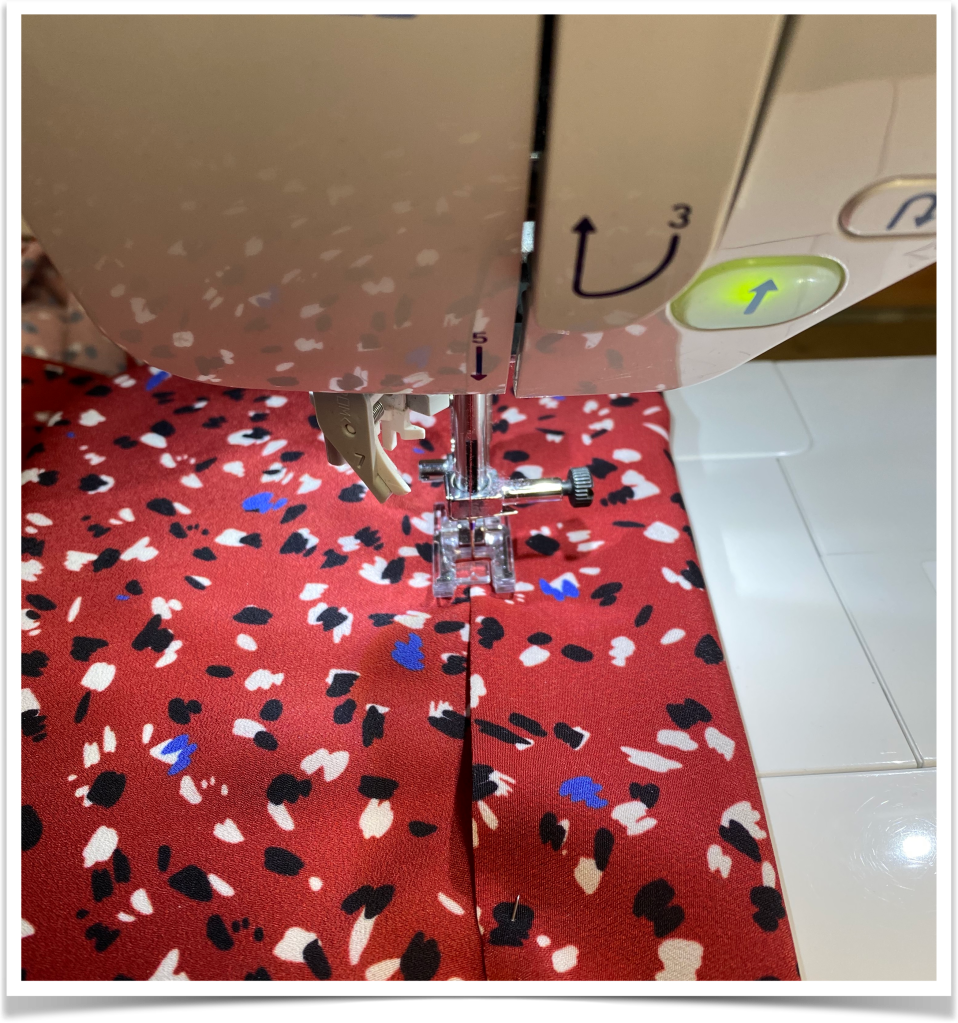
Sewing Notes
Instructions are printed directly on the pattern, but visit jalie.com/melanie and you can download and print off the instructions
- Instructions omit to tell you to cut the belt loop strip into 2. Nobody needs 20cm long belt loops!
- I included a hanger loop attached to the wrong side of the neck before attaching the neckband.
- To sew the neckband, I marked the centre back of the neck, pressed down 1cm along the long edge of the neckband and pinned the other long edge with the right side of the band to the wrong side of the neck and front edge, stitched and pressed. Stitched the short edges, folded the band to the right side and top stitched it down as close to the edge as I could. I find this method the best way of finishing a band neatly, rather than doing it as described in the pattern: you don’t miss any bits on the wrong side. Hand-stitching long bands is not for me on projects like this.
My thanks go to Lucy at http://www.sewessential.co.uk for the fabric, pattern and opportunity. This is a good starting point for a lot of future family gift making. Last year was pyjama bottoms, next year dressing gowns. Where to go from there I wonder…..

